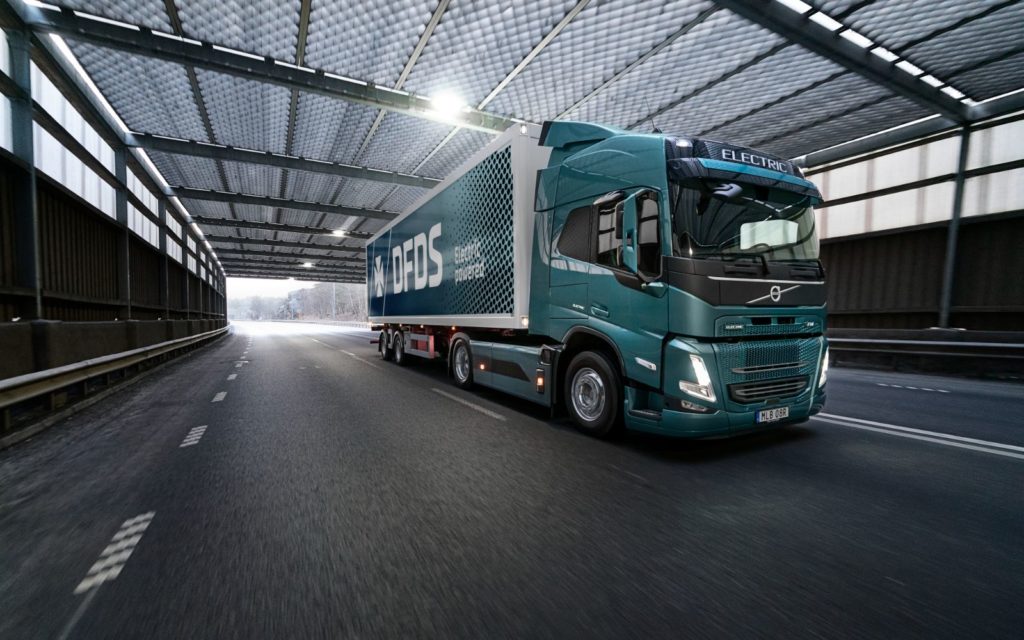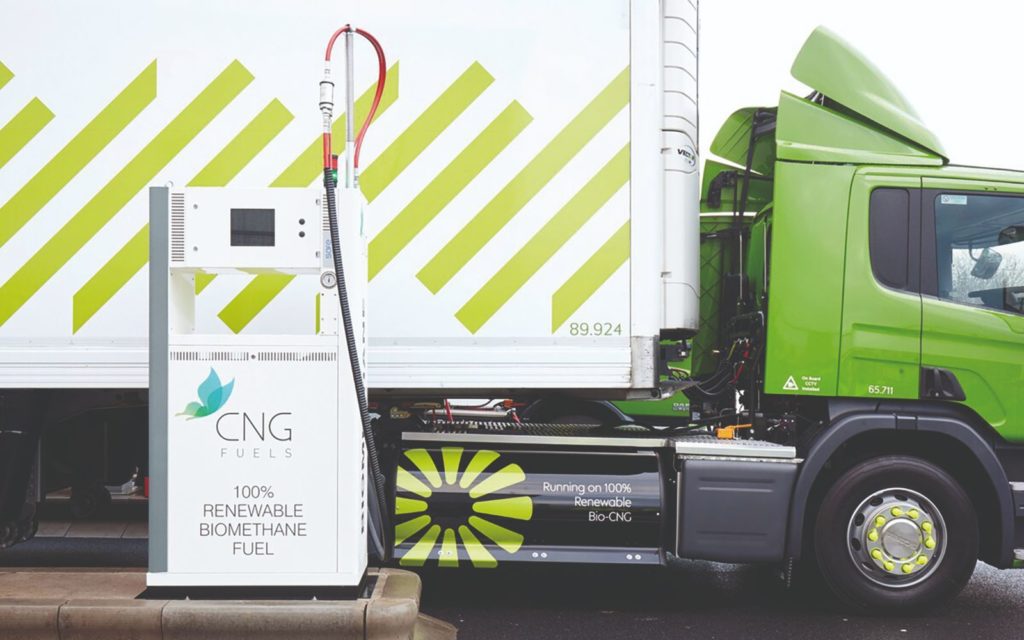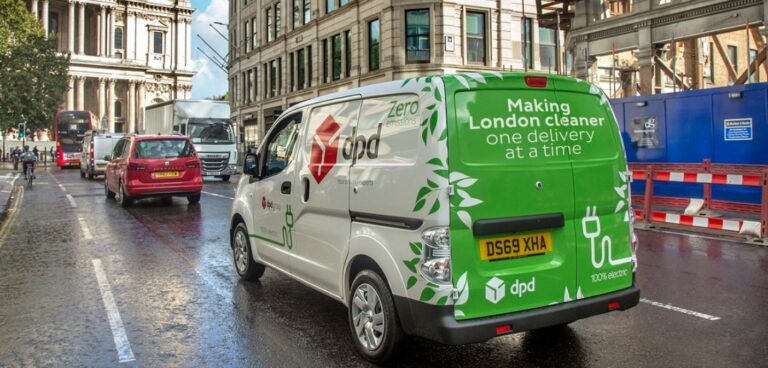The logistics sector has some huge challenges on the horizon when it comes to shifting to sustainable fleets. John Challen questions the readiness of the industry…
With COP26 squarely in the news since late October last year, there’s been even more attention than normal on the need for industries to clean up their acts. The transport and logistics sectors are no exceptions but, as it happens, has done more than most to set a path to zero emissions and a greener tomorrow.
Sales of new petrol and diesel vans will end at the same time as passenger cars – 2030. Those above 3.5 tonnes have an extra five years, but that’s still not much time in the grand scheme of things. In those cases, electric powertrains seem the obvious choice but it’s a slightly different situation when looking at the heavier end of the market. Trucks – which have a diesel stay of execution until 2040 – provide different challenges. The picture is also complicated by different types of haulage and loads.
There is a lot of talk about hydrogen and the likes of Daimler Trucks is busy ensuring there is a viable refuelling network in place before the deadline. Setting aside some people’s misgivings, hydrogen makes much more sense than battery packs for several reasons, including refuelling times and weight. But for urban distribution and operations that run on a repeatable cycle, electric trucks tick a lot of boxes.
Whatever the operator chooses, there will be disruption, confusion and costs involved. All that truck manufacturers such as Volvo can do is develop the vehicles to meet the needs and advise.
“We’ve got a full range of electric trucks – medium-duty models that are available to order now and heavy trucks that we’re already talking with customers about,” reveals Amy Stokes, Volvo’s head of e-mobility.
“So, we’ve got the products, but we can also provide customers with support on how those products fit into their operation. We do a full optimisation – we call it our electric range simulation – looking at their operation and the range that their vehicles cover. The simulation works out if our trucks suit their operation and if the answer is ‘yes’, it calculates how many batteries are needed to carry that out.”
Volvo’s electric trucks take any where between two and six batteries, depending on the model. But each of those batteries weighs about half a tonne, so maximising range isn’t something to be considered for logistics and inter-urban deliveries.
“Most of what we’re doing at the moment is looking at operations where trucks return to the depot at the end of the night so they can be recharged,” Stokes continues. The HGV charging infrastructure isn’t any where near as mature as the passenger car one, which – to some people – still needs a lot of work and investment.
Volvo’s medium-duty trucks can charge AC up to 22kW, while the heavy-duty ones can charge DC up to 44kW. That means an overnight charge on a relatively low investment of an AC charger can work well for a small number of trucks or just an individual battery-powered one. “By charging overnight, it’s a really good way of adopting electric into your f leet,” Stokes adds.
“What we’re doing to support that is talking about one truck or a couple of trucks for an operation and providing a charger with the vehicle. It requires an electrician to put in a circuit and install it, but the charge is included. So, we’re making that first step into the world of electric as straightforward as possible.”
For those looking at adopting electric on a larger scale, Stokes suggests more serious solutions and a higher-powered charging infrastructure would be required. “We’re working with a number of charging providers so that we can support customers who are completely new to charging infrastructure and electric trucks,” she reveals.

Race to zero
As Stokes suggests, now is the right time to think about – and even investigate – the switch to electric. “We’re not looking to shoehorn an electric truck into everybody’s business because there are some areas where it won’t work at the moment,” she reasons. “So, the key thing is to have a look and see the routes that those vehicles will be doing, how long and repeatable they are, and then get in touch with us and we can run the range simulation. We can work on the basis that if you need 200km, 300km or 380km – we’ve got a vehicle that covers all of those, fully laden. For operators doing those sorts of mileages and returning to base to potentially charge overnight, there’s no reason to not look at electric now.”
It’s an approach that many companies have taken. Starting at the small end, DPD has recently doubled its EV f leet with an order for 750 vans. Within that are 500 long-wheelbase 3.5-tonne vans and 250 smaller ones. It is planning to reach 2,000 units very soon.
“We only had 149 electric vehicles at the start of January 2020,” says Tim Jones, director of sustainability at DPD Group UK, which operates 10,000 vehicles from 84 locations. “We have been able to move that forward by working with manufacturers and different companies, and by November 2021 we had 1,700 EVs out there delivering up and down the UK. That will take us to around 15% of our total f leet operations being all-electric and clean vehicles. For us, this isn’t just taking a specific city or a small area and putting EVs in, it’s a mass change.”
On the heavier side, a DPD-led team set a world record in September 2021 for the longest distance covered by an electric truck. It might not have been real-world conditions, but 1,099km (683 miles) without recharging is still impressive. Additionally, the collaboration converted a Volvo FH that DPD Switzerland had been using daily for the previous six months in order to prove that “sustainable, energy-efficient and cost-efficient electric mobility in the transportation industry is not a mobility concept of tomorrow but is already a reality on European roads today”.
Elsewhere, DHL Express announced on World EV Day on 09 September last year that it planned an extra 320 electric vehicles on its f leet by the end of 2022. It has run electric vans in London since 2019 and the announcement was part of parent company Deutsche Post DHL Group’s €7bn (£5.8bn) investment to help meet its ‘Mission 2050’ net-zero emissions goals. The company is now looking at having more than 80,000 electric vehicles in its f leet and 60% of last-mile delivery electrified by 2030.
Great incentives
Eventually the day will come when operators won’t have a choice of what powers their vehicles. How to make the numbers add up when transitioning to electric is the big concern though. Stokes’ advice is to look beyond the sticker price on the truck.
“We are currently looking at the investments on a TCO basis, beyond just the capital cost of the truck,” Stokes says. “When you consider the number of miles the vehicles are doing, the price of diesel, the miles per gallon they get from their diesel f leet versus the cost of an electric truck, now you could be seeing as much as an 80%-per-kilometre increase for a transition to electric.
“We are really pushing hard to get greater incentives from the government to support that and to bring that down. When you transition to a new technology, until we get that volume in the market, the costs don’t start to come down. However, in the UK, the subsidies aren’t as high as in other areas in Europe, so we’re really pushing for greater incentives there,” she concludes.
New arrivals
As well as conventional vehicle manufacturers that are working with an existing product line-up on electric conversion, there is a new wave of dedicated OEMs working off bespoke EV platforms. This approach has several benefits and can often give operators a clearer idea of what they are dealing with in terms of the products they will be running.The likes of Arrival, Volta Trucks and Tevva are starting small (volume-wise) with medium-duty truck solutions and are also dedicated to establishing an effective and wide-reaching charging infrastructure to support the growing number of electric trucks that will hit the market in the coming years. However, in many cases, operators might not need as many miles as they think. In the case of Volta, customers get the Volta Zero, a 16-tonne vehicle with 8.6 tonnes of payload and a theoretical driving range of 90-125 miles.
“This range is more than sufficient for the type of vehicle we’re building,” says Ian Collins, Volta’s engineering and procurement director. “We’re spending a lot of time with customers ensuring we are building a vehicle that is right for them and they are telling us that a 90- to 125-mile range works.”

Fuel for thought
Many fleets will not be able to fully commit to electric power in the immediate future, but they can still try to improve their environmental credentials. Biofuel and other low-carbon fuels offer another option in the short- to mid-term and it has been made easier with the opening this year of the world’s largest biomethane refuelling station in Bristol.
The refuelling station, established by CNG Fuels, services numerous fleets with biofuel such as Warburtons, Farm Foods and Hermes, refuelling up to 80 trucks an hour. Renewable biomethane is a cost-effective alternative to diesel for HGVs and helps cut GHG emissions by up to 90% – and fuel costs by up to 40%.
Furthermore, the biofuel company has been predicting demand for the fuel to grow at around 100% a year and says that by 2025 around 10% of the UK’s HGV fleet covering ‘high mileage’ will be running on Bio-CNG.
This article was originally published in the March 2022 issue of CiTTi. Click here to view the original article.





